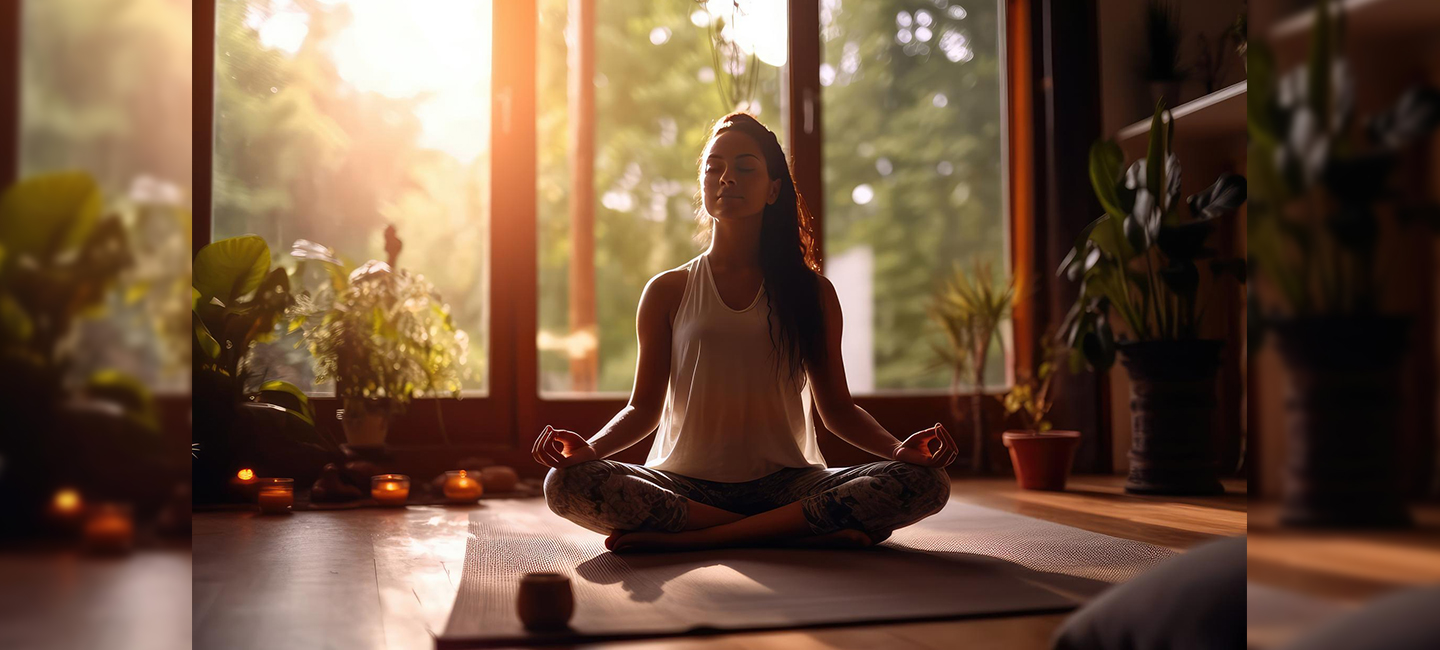5 Best Yogic Techniques for Relieving Back Pain: Posture and Spinal Health
Table of contents:
Introduction:
One of the most common health complaints of our time is back pain, which afflicts millions of people worldwide having perceived consequences caused by back pain . Whether it’s hours spent on an office chair or months carrying heavy loads or even years spent constantly slouching over a lab bench, working in a poor posture can really drop the quality of life of a person. Fortunately, many have changed course and learned to listen to their aches and pains; yet still too many go silently suffering or resorting to symptomatic relief from back pain that only hides the problem rather than finding the root of the problem.
The good news, however, is that Yoga can help in dealing with spinal health and posture correction holistically so that one can avoid back pain and prevent future problems. Being the form of movement therapy, Yoga as exercise enhances the flexibility of the body, strengthens muscles, and gives an individual increased alignment in the body. With specific Yoga for back pain relief (Upper & Lower back) , breathing techniques, and meditation, one can bring the body to a harmonious state that will support the spinal system.
This all-in-one guide discusses causes of back and vertebral pain, common treatments, and how yoga as a treatment can help decrease discomfort and allow for better flexibility and good posture through yoga. Additionally, for those who enjoy yoga or wish to teach it, we also include modules on managing back and spinal pain in our teacher training course in yoga using therapeutic techniques you can apply in your teaching practice.
Causes and Triggers of Back Ache
It is a multifactorial condition with a plethora of potential causes. It can run the gamut from merely feeling awkward to chronic aches that limit one’s capacity to perform his or her usual daily chores. Understanding the causes would help in treating and avoiding back and shoulder pain.
Common Causes of Back and Shoulder Pain:
Poor Posture: Slouching or sitting improperly for quite a long time exerts undue stress on the spine. This is the most common cause of both upper and lower back ache.
Prolonged Sitting: Most of the time, people are found to sit for extended hours, especially at work. Weaker muscles make one’s back experience more strain.
Injury and Trauma: Falls, sports, and occasionally poor lifting are among the causes that can lead to sprains, fractures, or displacement of parts in your spine
Muscle Strain: Overstretching or overworking the muscles of the back causes pain and swelling.
Herniated or Bulging Discs: This refers to tears or bulges in the cushioning discs in between vertebrae, thus putting pressure on nearby nerves and causing aching pains.
Degenerative Conditions: As age advances, conditions such as arthritis, osteoporosis, and degenerative disc disease become more common; thus damaging spinal health.
Stress and Tension: More often than not, the stress and tension are portrayed in physical terms, whereby primarily neck and shoulders muscles come hardened to create pain.
While all of these contributing factors play a role in a situation of back and spinal pain, the root cause usually revolves around muscular imbalances and lack of movement. Here, practices of yoga for back pain relief as a regular regime can find answers to long-term relief through strengthening, flexibility, and proper body alignment.
Traditional Treatments for Back Pain
Many people rely on traditional medication to treat their condition of back and spinal pain which offers numerous options for treatment, but has side effects on your overall health in long run. some of which are:
1. Analgesic and Anti-inflammatory Drugs: Examples of the analgesics available OTC or on prescription include ibuprofen and acetaminophen. These drugs help provide relief from pain and inflammation but only temporarily and do not cure the problem.
2. Physical Therapy: A physiotherapist works closely with the patient to use postural corrections and strengthen the muscles which support the spine. Some exercises may include stretching, core strengthening, and low-impact aerobic physical activity.
3. Chiropractic care: Chiropractors love stretching the vertebrate to put them back in realignment and proper functioning. Such a form of treatment may be helpful to some patients, but for it to be maintained over the longer term would have to go alongside other forms of treatment.
4. Massage: Massage relaxes tense muscles, gets the blood flow going again, and gets the patients relaxed. Short-term relief can also be experienced through regular sessions; the patient continues being in pain unless habitual self-treatment through stretching is adopted.
5. Heat and Cold Therapy: Applying heat or ice packs to affected areas minimizes inflammation and provides pain relief. Heat therapy enhances the flow of blood, while cold therapy helps in reducing swelling.
Although these treatments solve problems at short-term intervals, they do not find an eventual remedy. Yoga is a preventive and therapeutic exercise that does not just provide relief but works in maintaining spinal overall health.
What are side effects these medications causes in long run Read here.
Care Tips-Critical for Prevention from Back Ache
Besides Yoga, here are some simple practices that may be enough to prevent or control spinal pain:
Maintain the proper sitting or standing posture. Your shoulders, hips, and head must be in the same plane. Always avoid slouching and use an ergonomic chair if such one is available.
Engage in Regular Exercise: Stay active and ensure you incorporate stretches and strength training into your routine. Try to focus on building core strength to support your spine.
Stretch Daily: Stretching helps release tension in your muscles and increases your range of motion. Yoga is an awesome way to stretch daily.
Lifting Heavy Objects Correctly: Always remember to bend your knees and lift the object with your leg muscles rather than using your back muscles whenever you need to lift something heavy. The farther away the object is from your body, the more strain will be put on it and consequently additional pressure on your spine.
Healthy Weight: For sure, overweight or excess body weight also causes added pressure on the spine. Maintaining a good diet and exercising regularly can help you maintain a healthy weight and therefore avoid back stiffness and pain.
If you work at an office and spend most of your time sitting, get up and walk away from your desk to stretch up. It can really loosen up your back muscles so that you won’t feel stiffness.
5 Best & Effective Yoga Practices to Help Reduce Back Pain
YOGA TIPS FOR BACK ACHE
Yoga tones up the weak muscles of the back, is an exercise to improve flexibility, and develops body consciousness. The following Yoga techniques may be practiced daily for relief from back discomfort as well as better posture. These techniques are part of our online yoga classes and we go deep into them in our course of yoga training to become a yoga teacher.
1. Asanas of Yoga Poses for Back and Spinal Pain Relief
Specific Yoga asanas for back and spinal pain relief that target all the muscles of the back and the core. These strengthen, stretch, and relieve the tension and pain in those areas. Some fundamental asanas are as follows:
Cat-Cow Pose (Marjaryasana-Bitilasana): This is an easy movement that stretches and mobilizes the spine, enhancing flexibility and loosening up stiffness.
Child’s Pose (Balasana): This is a restorative pose that lengthens the spine and lets go of the lower back’s tension, providing instant relief from discomfort.
Downward-Facing Dog (Adho Mukha Svanasana): The entire back stretch can be seen in this foundational Yoga posture. It establishes alignment of the spine and strenthenes the core muscles.
Bridge Pose (Setu Bandhasana): For the backbone, this pose strengthens the lower back muscles by aligning the backbone, improving posture, and taking some weight off your painful back muscles.
Sphinx Pose (Salamba Bhujangasana): This is a milder backbend that will make it easier to open the chest. Sphinx stretches the lower back, fostering good spinal health and rids tension.
These postures help reduce pain and build the strength and pliability to prevent future back problems. In our best yoga course, we have placed an emphasis on such poses to improve posture and healthy spines.
Also read : Ultimate Benefits Of Yoga For Mind and Body.
2. Pranayama (Breathing Exercises) for Spinal Health
Pranayama, or controlled breathing, is the integral part of the practice of Yoga. It helps in lowering tension, improving oxygen flow, and allows for the release of back tensions.
Ujjayi Pranayama (Victorious Breath): A powerful slow breathing technique that induces relaxation, stress relief, and sharp mind. This also relaxes the muscles of the upper back and the shoulders.
Diaphragmatic Breathing: This one stimulates a person to breathe into his or her belly, not the chest. It therefore makes use of the diaphragm to some extent, reduces the tension in the lower back, and helps people stand or sit straight.
3. Kriya (Cleansing Techniques)
While Kriyas are generally cleansing and purifying, some of these cleansing practices are meant to relax the emotional states causing stress, which most often presents physically as tension along the back.
Jala Neti: It is a cleanser for the nasal passages, and it aids in clearing up stuffed sinuses and thus reduces stress by improving mental acuity.
4. Meditation to Reduce Stress and Pain
One of the main causes for back and shoulder pain is stress, which meditation calms down, reduces feelings of stress, and makes people more mindful of how they carry themselves.
Mindfulness Meditation increases awareness of the present moment and locates tension areas within the body. Regular practice may help improve posture to reduce unconscious slouching and hunching over.
Body Scan Meditation: Scan from head to toe, releasing areas of tension and inviting relaxation providing relief from back and shoulder pain.
5. Diet and Nutrition for Spinal Health
One needs to know and understand the nature of diet in maintaining a healthy spine and reducing inflammation. A balanced diet supports muscles, bones, and joints necessary for holding good posture and proper spinal health.
Calcium: A healthy spine would have healthy bones, thus the need to maintain regular consumption of dairy products and greens enriched with calcium in the diet.
Vitamin D: Helps calcium get absorbed, which you can also get through sun exposure or supplements.
Magnesium: Calms the muscles and helps ward off cramps. Include nuts, seeds, and green vegetables in your diet.
Omega-3 Fatty Acids: Anti-inflammatory compounds, which can be found in fish like salmon and flaxseed, that might alleviate inflammation-based vertebral pain.
Issues, for instance, back pain will be dealt with by our yoga training course that incorporates holistic approaches with nutrition and Yoga Therapy as tools. Whether you wish to join online yoga classes or find out how to help other people handle their back health, our course will put you in good stead with the knowledge you desire.
Conclusion: Yoga as a Holistic Solution for Chronic Back Ache
Back and Shoulder pain can be quite common, but it doesn’t have to define your life. With Yoga, you can find relief from pain, develop the right posture, and maintain your spinal health. Be it the asanas or deep breathing to calm down a worried mind or meditation to shed off stress, Yoga provides an all-rounded solution rather than just throwing a Band-Aid at the problem.
Are you ready to dig deeper into the mysteries of Yoga, helping others to find relief in back and spinal pain? Then join our yoga teacher training course – from asanas for spinal health and down to meditation and diet – learned through our online classes. It is a top yoga program suited for anyone who wants to enrich their yoga practice or have a promising teaching career. For further details visit www.onlineyogalife.com
Further Readings:
Divine Yoga Experience: Transform Your Life at Satyadhara
Is there Yoga for reducing Stress and Anxiety?






